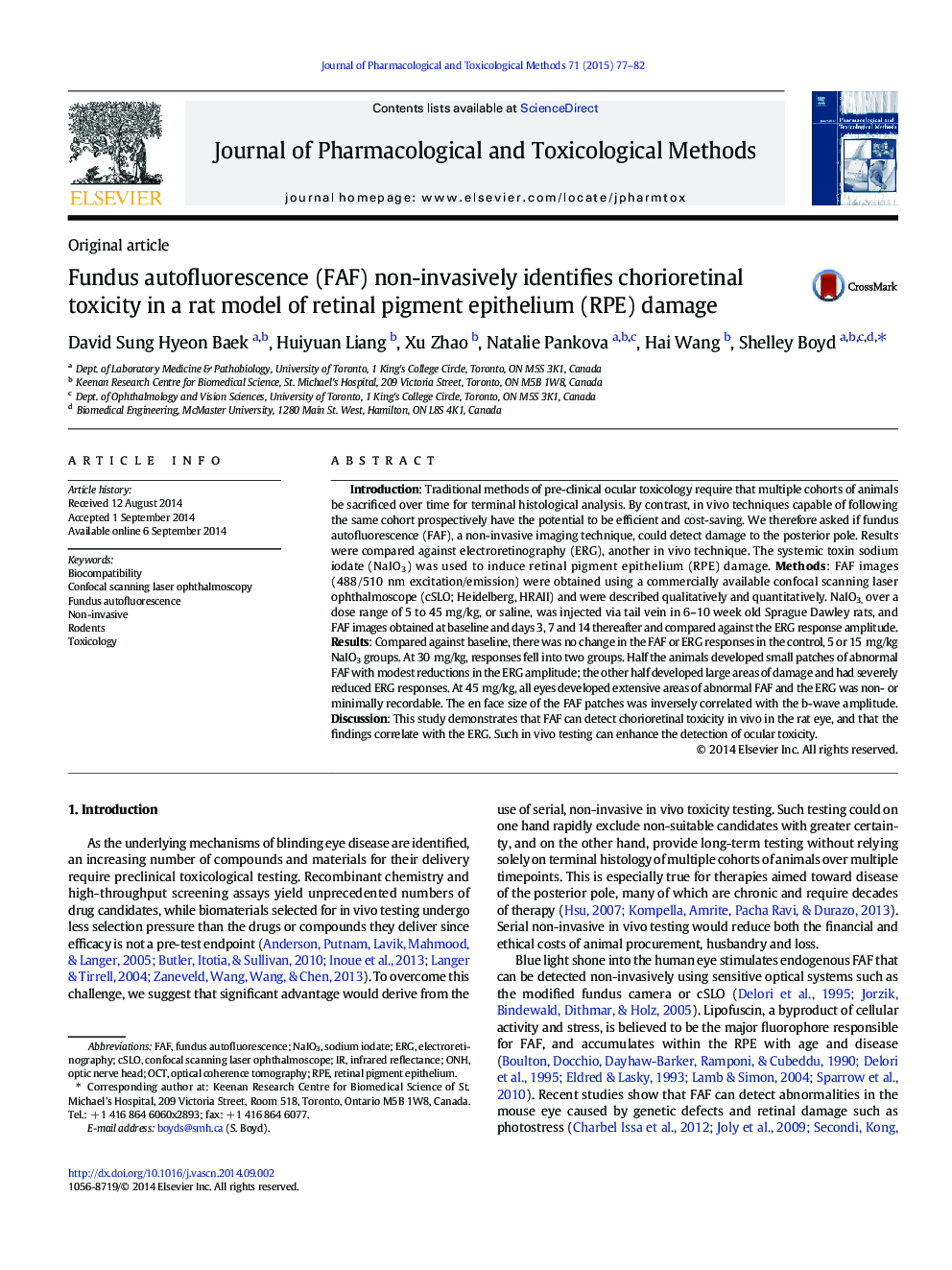| کد مقاله | کد نشریه | سال انتشار | مقاله انگلیسی | نسخه تمام متن |
|---|---|---|---|---|
| 5840946 | 1560492 | 2015 | 6 صفحه PDF | دانلود رایگان |

IntroductionTraditional methods of pre-clinical ocular toxicology require that multiple cohorts of animals be sacrificed over time for terminal histological analysis. By contrast, in vivo techniques capable of following the same cohort prospectively have the potential to be efficient and cost-saving. We therefore asked if fundus autofluorescence (FAF), a non-invasive imaging technique, could detect damage to the posterior pole. Results were compared against electroretinography (ERG), another in vivo technique. The systemic toxin sodium iodate (NaIO3) was used to induce retinal pigment epithelium (RPE) damage.MethodsFAF images (488/510Â nm excitation/emission) were obtained using a commercially available confocal scanning laser ophthalmoscope (cSLO; Heidelberg, HRAII) and were described qualitatively and quantitatively. NaIO3, over a dose range of 5 to 45Â mg/kg, or saline, was injected via tail vein in 6-10Â week old Sprague Dawley rats, and FAF images obtained at baseline and days 3, 7 and 14 thereafter and compared against the ERG response amplitude.ResultsCompared against baseline, there was no change in the FAF or ERG responses in the control, 5 or 15Â mg/kg NaIO3 groups. At 30Â mg/kg, responses fell into two groups. Half the animals developed small patches of abnormal FAF with modest reductions in the ERG amplitude; the other half developed large areas of damage and had severely reduced ERG responses. At 45Â mg/kg, all eyes developed extensive areas of abnormal FAF and the ERG was non- or minimally recordable. The en face size of the FAF patches was inversely correlated with the b-wave amplitude.DiscussionThis study demonstrates that FAF can detect chorioretinal toxicity in vivo in the rat eye, and that the findings correlate with the ERG. Such in vivo testing can enhance the detection of ocular toxicity.
Journal: Journal of Pharmacological and Toxicological Methods - Volume 71, JanuaryâFebruary 2015, Pages 77-82